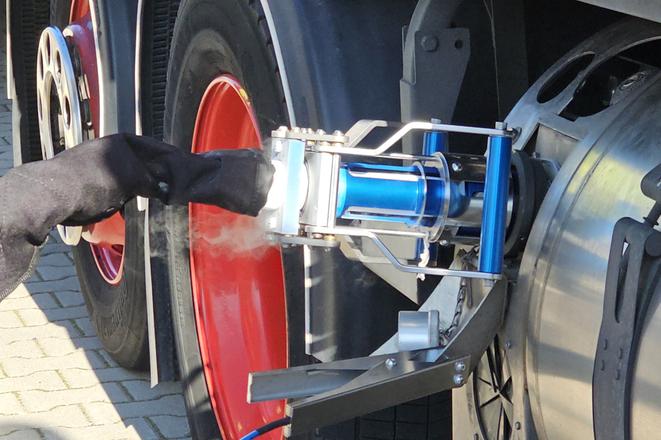The European Union aims to become carbon-neutral by 2050, but transportation is the only sector in which emissions have not decreased in recent years. In fact, these emissions have increased, and Slovakia has contributed to the rise. Although some view the transition to electromobility as the only solution, energy and transport operators are advocating for a technology-neutral approach.
LNG
LNG (liquefied natural gas) can fully replace diesel in the cargo transport segment, as it provides the same operational and performance parameters with significant savings in greenhouse gas and pollutant emissions. The use of LNG produces almost no particulate matter released into the air. No filters or additives are therefore needed. Cars powered by this fuel have been shown to produce fewer harmful greenhouse gases, in particular sulphur oxides (-99 percent), nitrogen oxides (-75 percent) and carbon oxides (-50 percent). LNG trucks with fuel tanks holding between 290 and 390 kilograms of liquefied gas have an average range of 1,200 to 1,500 kilometres, so can compete in range with diesel trucks.
Source: SPP
“Gas mobility can be a very good way to decarbonise transport,” Richard Kvasňovský, executive director the Slovak Gas and Oil Association (SPNZ), told The Slovak Spectator. “We see room there, particularly in heavy goods transport, bus transport and public transport. The advantages of gas mobility are also that there is a saving of roughly 20 percent in CO2 emissions compared to diesel.”
Gas mobility refers to the use of gas as a fuel for vehicles, typically either compressed natural gas (CNG) or liquefied petroleum gas (LPG). This type of mobility is promoted as a cleaner alternative to traditional petrol or diesel due to its lower carbon emissions and reduced output of air pollutants.
While some see gas mobility as a transitional solution toward greener transportation, especially where electric vehicle infrastructure is still developing, others advocate for a mixture of technologies and urge that none be excluded.
“For now, the best solution is to have a patchwork of technologies available for both customers and the market, to determine which is the most cost-effective,” Adam Daňko, renewables regulation business development lead for central and eastern Europe at Shell Slovakia, told The Slovak Spectator. “A solution to become zero-emission is bioLNG. This way we even can achieve negative emissions.”

Kvasňovský specified that for a mixture of bioLNG – which is made by processing organic waste flows, such as organic household and industrial waste, manure, and sewage sludge – and natural gas in the ratio of 43:57 percent, the final mixture is carbon-neutral.
EU's targets
In 2023, the EU adopted a set of Commission proposals to make the EU’s climate, energy, transport and taxation policies fit for reducing net greenhouse gas emissions by at least 55 percent by 2030, compared to 1990 levels. This will enable the EU to become the first climate-neutral continent by 2050.
Total greenhouse gas (GHG) emissions from the transport sector in 2021 accounted for 18 percent of all GHG emissions in Slovakia, which amounted to 7,523 Gg CO2 equivalent. The increase in these emissions relative to the 1990 baseline reference year was more than 10 percent and a year-on-year increase relative to the 2020 baseline of 7 percent. Road transport accounted for the largest share of emissions, with more than 97 percent, the Slovak Hydrometeorological Institute (SHMÚ) reported.
A developing network of LNG filling stations for trucks
On November 5, Shell Slovakia opened its first LNG filling station for heavy-duty vehicles near Lozorno, western Slovakia, extending the network of LNG filling stations in Slovakia to nine. The station is located in the P3 Bratislava logistics park on the D2 highway, which connects Budapest to Vienna via Bratislava.
To read in this article
-At what temperature is LNG stored
-How many trucks can be filled at this filling station
-Where other LNG filling stations are located in Slovakia


 Refuelling LNG is similar to refuelling petrol or diesel. (source: Jana Liptáková)
Refuelling LNG is similar to refuelling petrol or diesel. (source: Jana Liptáková)